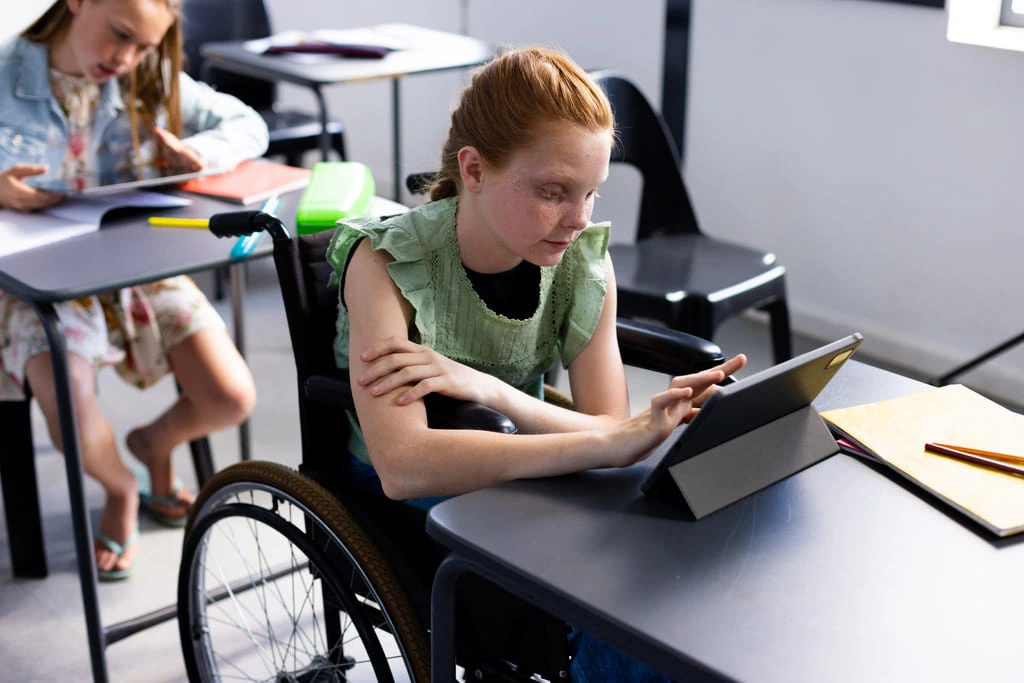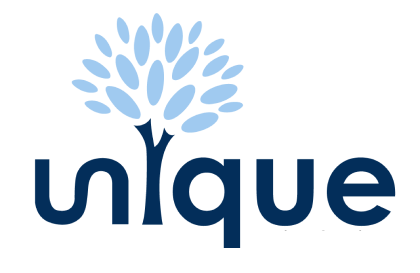Mainstreaming vs Inclusive Education
Mainstreaming vs Inclusive Education
Listen to the article
Table of contents
In modern education, the discourse surrounding integrating special education students into mainstream classrooms has significantly evolved, giving rise to the concepts of mainstreaming and inclusive education. Exploring the differences between mainstreaming and inclusive education, we realise that both concepts are vital in shaping the learning experiences of special education students within general education classrooms. Our discussion surpasses traditional boundaries with progressive approaches that empower students of all abilities.
Defining Mainstreaming and Inclusive Education
Mainstreaming in education refers to the practice of integrating students from a special education environment into a general education classroom, fostering an environment where students with disabilities learn alongside their peers. In this approach, special education students participate in regular classroom activities, receive education from general education teachers, and interact with their classmates in a natural, inclusive setting. The aim is to provide students with disabilities the opportunity to engage with age-appropriate academic education and social experiences, promoting their overall development while facilitating a sense of belonging within the larger school community. Mainstreaming not only benefits special education students by exposing them to diverse learning opportunities but also enhances the social understanding and empathy of peers, encouraging mutual respect and acceptance among all students.
Inclusive education takes mainstreaming a step further, advocating for a fully inclusive classroom where all students are educated together in a supportive and accommodating environment. In an inclusive classroom, special education students are not just physically present; they actively participate in the learning process with the help of an individualised education program (IEP) and support from special education teachers. The focus is on providing appropriate accommodations and modifications to ensure every student can access the curriculum and succeed academically. Inclusive education opens the door for a least restrictive environment, emphasising the importance of enabling special education students to learn and socialise with their peers in a regular classroom setting while receiving the necessary support to meet their unique learning needs.

Public schools play a crucial role in implementing inclusive education practices, enabling a sense of community and acceptance among students of all abilities in the general education classroom. In an inclusive classroom, special education teachers collaborate with their general education counterparts to create an environment where diversity is celebrated and every student’s potential is recognised and nurtured. By embracing the principles of mainstreaming and inclusive education, public schools pave the way for a more inclusive society where individuals with disabilities are valued for their abilities and contributions, promoting a culture of empathy, understanding, and equal opportunity for all. Extensive research has demonstrated that students with disabilities exhibit significant cognitive and social growth, both in the short and long term, when they are educated within a general education classroom.
Mainstreaming: The Inclusion of Special Needs Students
Mainstreaming, the practice of integrating students with disabilities into general education classrooms, represents a significant stride towards fostering an inclusive and diverse learning environment. Embracing the concept of mainstream education reflects our society’s evolving understanding of individual differences and the recognition that every special education student deserves an equal opportunity to learn and thrive. By incorporating progressive teaching methods, educators can tailor their instruction to accommodate the diverse needs of students, ensuring that every child, regardless of their abilities or challenges, can actively participate in the learning process. This approach not only benefits students with complex needs by providing them with a chance to interact and learn alongside their peers, but it also enriches the overall classroom experience. Through collaborative learning, students develop empathy, compassion, and a deeper appreciation for the unique strengths and perspectives of their classmates, fostering an atmosphere of acceptance and support.
For example, when a student with visual impairments joins a mainstream classroom, the special education teacher implements innovative teaching strategies to create an inclusive environment. The teacher designs interactive lessons that cater to various learning styles and incorporate visual aids, hands-on activities, and flexible grouping techniques. With the support of classroom aides and specialised resources, special education students actively engage in class discussions and collaborative projects with their peers. The classmates, in turn, learn about differences and develop essential social skills. Through personal guidance and understanding, the teacher helps the students build their communication skills and self-confidence. Over time, the student not only participates actively in class but also forms genuine friendships with classmates, demonstrating the power of mainstreaming in fostering an inclusive and supportive learning community where everyone thrives together.
Inclusive Education: Creating an Inclusive Environment
Inclusive education is a transformative approach that promotes equal opportunities for all students, regardless of their abilities, backgrounds, or differences. Creating an inclusive environment goes beyond physical accessibility; it embodies a mindset of acceptance, understanding, and respect for diversity. In an inclusive classroom, teachers employ various strategies to cater to the diverse learning needs of students, ensuring that every individual feels valued and supported. This approach fosters a sense of belonging among students, enhancing their social and emotional development. Through inclusive education, schools embrace the uniqueness of each learner and celebrate differences, teaching students the importance of empathy, cooperation, and mutual respect. By nurturing an inclusive environment, a general educational setting becomes a space where every student can thrive, irrespective of their abilities or challenges.

For instance, imagine a primary school implementing inclusive education practices. In this school, teachers recognise the diverse learning styles and abilities of their students. They employ differentiated instruction, adapting their teaching methods to accommodate various learning needs. Students with disabilities are integrated into regular classrooms and are provided with the necessary support, such as assistive technologies or personal aides, to participate fully in academic and social activities. The school promotes a culture of acceptance and understanding among students, teaching them about disabilities and encouraging them to collaborate and support one another. In this inclusive environment, students learn valuable life skills, including empathy, tolerance, and teamwork, preparing them for a future where they appreciate and respect the differences in the world around them.
Key Differences Between Mainstreaming and Inclusive Education
Mainstreaming and inclusive education are both approaches aimed at integrating students with disabilities into the general education system, fostering social development and enhancing learning outcomes.
Here, we summarise the key differences between mainstreaming and inclusive education:
- Placement Focus:
- Mainstreaming: Special education students spend most of their day in a general education classroom.
- Inclusive Education: All students, regardless of abilities or disabilities, are educated together in the same classroom.
- Support Services:
- Mainstreaming: Special education students receive supplementary aids and services within the regular education classroom.
- Inclusive Education: Classroom environment, curriculum, and teaching methods are adapted to accommodate the diverse needs of all students.
- Social Integration:
- Mainstreaming: Promotes social interactions between special education students and peers during specific times of the day.
- Inclusive Education: Fosters an inclusive and accepting atmosphere where all students interact and learn together throughout the day.
- Special Education Classroom Involvement:
- Mainstreaming: Special education students may also spend time in a special education classroom.
- Inclusive Education: Special education students are fully integrated into the regular education classroom and do not attend separate special education classes.
- Philosophical Approach:
- Mainstreaming: Focuses on integrating special education students into the general education system to some extent.
- Inclusive Education: Embraces the idea of equal opportunities for all students, emphasising adapting education to meet the needs of every learner.
- Learning Environment:
- Mainstreaming: Strives to create access to the same instructional materials in the least restrictive environment for special education students within the general education system.
- Inclusive Education: Advocates for a fully accommodating and inclusive environment where all students can learn and participate together.

Benefits of Mainstreaming
Mainstreaming offers numerous benefits to students with disabilities, such as:
- Higher Academic Achievement: Mainstreaming enhances academic skills, improving overall performance. Access to a resource room and direct instruction boosts learning outcomes, especially for students with mild intellectual disabilities.
- Better Social Skills: Mainstreaming allows students with disabilities to develop essential social skills through peer interactions. For children with autism and ADHD, increased social engagement outside the classroom significantly improves communication and social interactions.
- Enhanced Empathy and Sensitivity: Integrating students with disabilities in classroom activities fosters empathy among all students. Through inclusive education, students become more aware of diverse needs, promoting a more compassionate and understanding school environment.
Benefits of Inclusive Education
Inclusive education fosters a diverse and supportive learning environment where students of all abilities learn side by side. Students in inclusive classrooms learn essential social skills such as empathy, patience, and understanding. Interacting with peers of diverse abilities encourages meaningful friendships, teamwork, and cooperation.
By embracing inclusion, schools create an atmosphere that celebrates differences and encourages mutual respect among students. This approach:
- Promotes Diversity and Acceptance
- Enhances Social Skills
- Boosts Self-Esteem
- Encourages Empathy and Understanding
- Strengthens Academic Performance
- Prepares for Real-World Diversity
- Creates Inclusive Communities
- Encourages Collaboration among Educators
- Fosters Lifelong Learning
- Promotes Equal Opportunities

Making an Informed Choice
In education, the choice between mainstreaming and inclusion is pivotal, demanding careful consideration from parents, educators, and policymakers alike. Mainstreaming, which integrates children with disabilities into regular classrooms, offers numerous positive aspects. It fosters social interaction, empathy, and understanding among students, nurturing an inclusive environment that mirrors diversity. However, this approach must be executed with careful attention to the individual needs of children with intellectual disabilities. Adequate support, both from special education services and support staff, is paramount to ensure that these students can actively engage with the curriculum and their peers.
On the other hand, inclusive education, which emphasises adapting the curriculum to accommodate diverse learning styles and abilities, places the primary focus on creating an environment where every child can thrive. Policymakers play a crucial role in shaping inclusive education by ensuring that special education laws are robust and protecting the rights of children with disabilities while providing the necessary resources to schools. Educators and parents should collaborate closely, advocating for the additional support their children require to excel within inclusive classrooms. By recognising the unique strengths and challenges of each child and providing tailored assistance, the balance between mainstreaming and inclusion can be achieved, fostering an educational environment where all students, regardless of their abilities, can succeed and flourish.
Share This Story













 Go Back
Go Back




